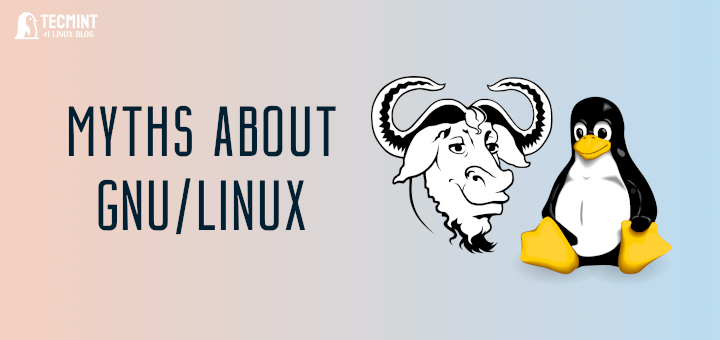For a long time, Mozilla’s Firefox has been my web browser of choice. I have always preferred it to using Google’s Chrome, because of its simplicity and reasonable system resource (especially RAM) usage. On many Linux distributions such as Ubuntu, Linux Mint and many others, Firefox even comes installed by default.
Recently, Mozilla released a new, powerful and faster version of Firefox called Quantum. And according to the developers, it’s new with a “powerful engine that’s built for rapid-fire performance, better, faster page loading that uses less computer memory.”
Read Also: How to Install Firefox Quantum in Linux
However, after I updated to Firefox Quantum, I noticed two significant changes with by far the biggest update to Firefox: first, it is fast, I mean really fast, and secondly, it’s greedy of RAM just like Chrome, as you open more tabs and continue to use it for a long time.
Therefore I carried out an simple investigation to examine Quantum’s memory usage, and also tried to compare it to Chrome’s memory usage, using the following testing environment:
Operating system - Linux Mint 18.0 CPU Model - Intel(R) Core(TM) i3-3120M CPU @ 2.50GHz RAM - 4 GB(3.6 Usable)
Firefox Quantum Eats RAM With Many Tabs Opened
If you open Quantum with just few tabs, let’s say up to 5, you’ll notice that memory consumption by Firefox is fairly good, but as you open more tabs and continue to use it for long, it tends to eat up RAM.
I performed a few tests using glances – a real-time Linux system monitoring tool, to view top process by RAM usage. Under this tool, to sort processes by RAM usage, simply press m key.
I started by running glances and sorting processes by highest RAM usage before launching Firefox, as shown in the screenshot below.
$ glances
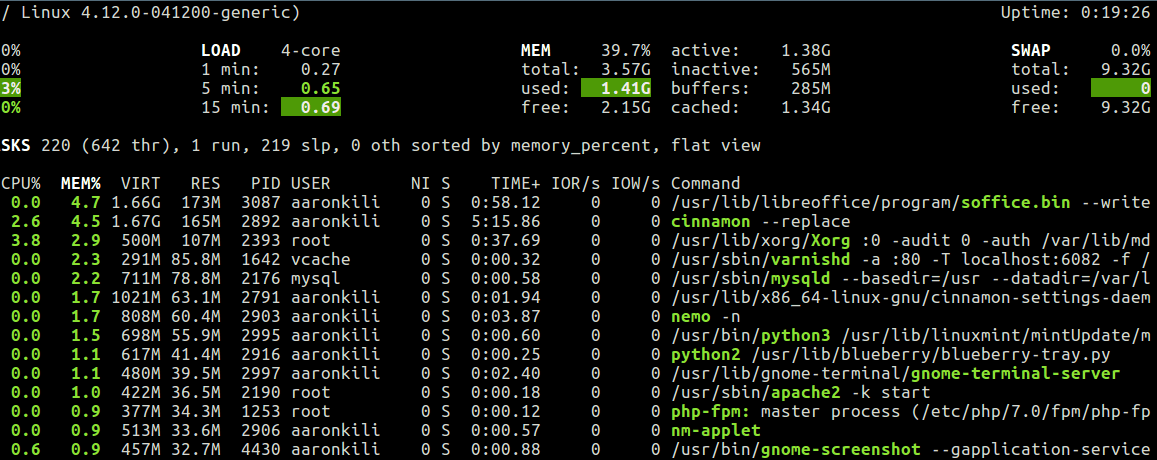
After launching Firefox and using it for close to half an hour with less than 8 tabs open, I captured a screenshot of glances with processes sorted by RAM usage shown below.
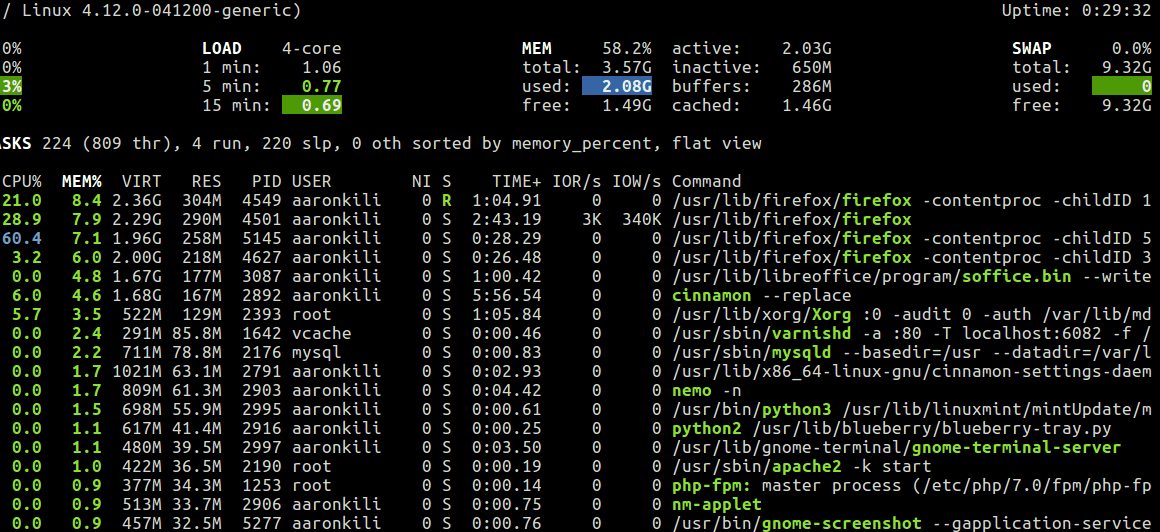
As I continued using Firefox through the day, the memory usage was steadily increasing as seen in the next screen shot.
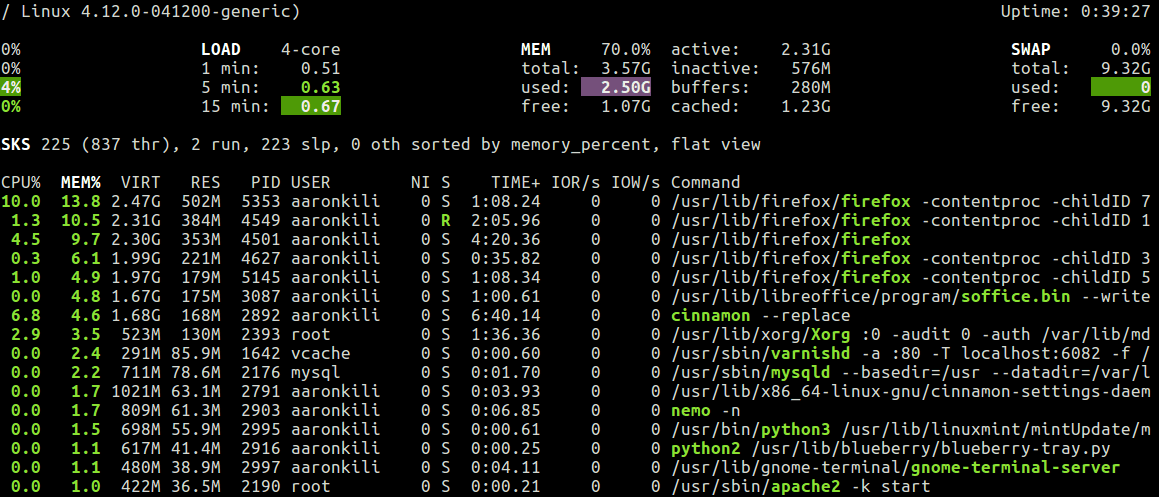
At the end of the day, Firefox had already consumed more than 70% off my system RAM as shown by the red warning-indicator in the following screen shot.
Note that during the test, I did not run any other RAM-consuming applications apart from Firefox itself (so it was definitely the one consuming the most amount of RAM).
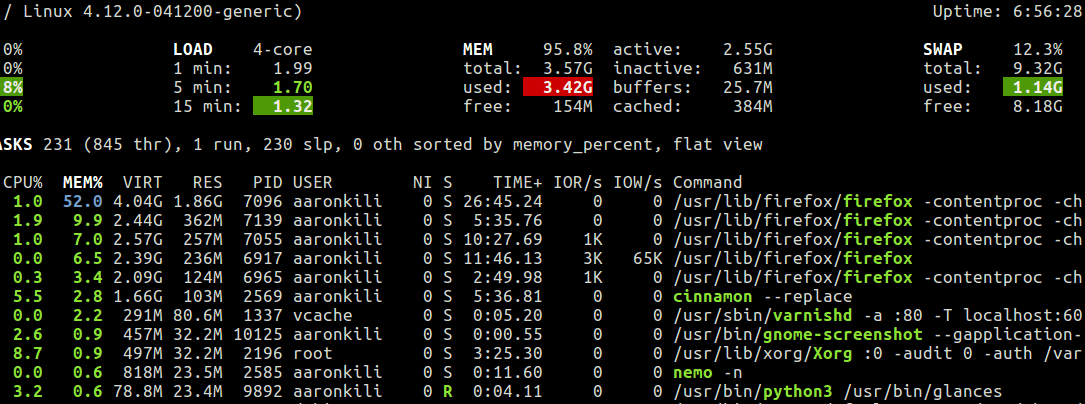
From the results above, Mozilla was rather misleading in telling users that Quantum uses less computer memory.
Having known Chrome for eating RAM, the following day, I decided to also compared its (Quantum’s) memory usage with Chrome as explained in the next section.
Firefox Quantum Vs Chrome: RAM Usage
Here, I started my test by launching both browsers with the same number of tabs and opening the same sites in corresponding tabs as seen in the screen shot below.

Then from glances, I watched their RAM usage (sorted processes by memory usage as before). As you can see in this screenshot, considering all Chrome and Firefox processes (parent and child processes) on average Chrome still consumes more percentage of RAM than Quantum.
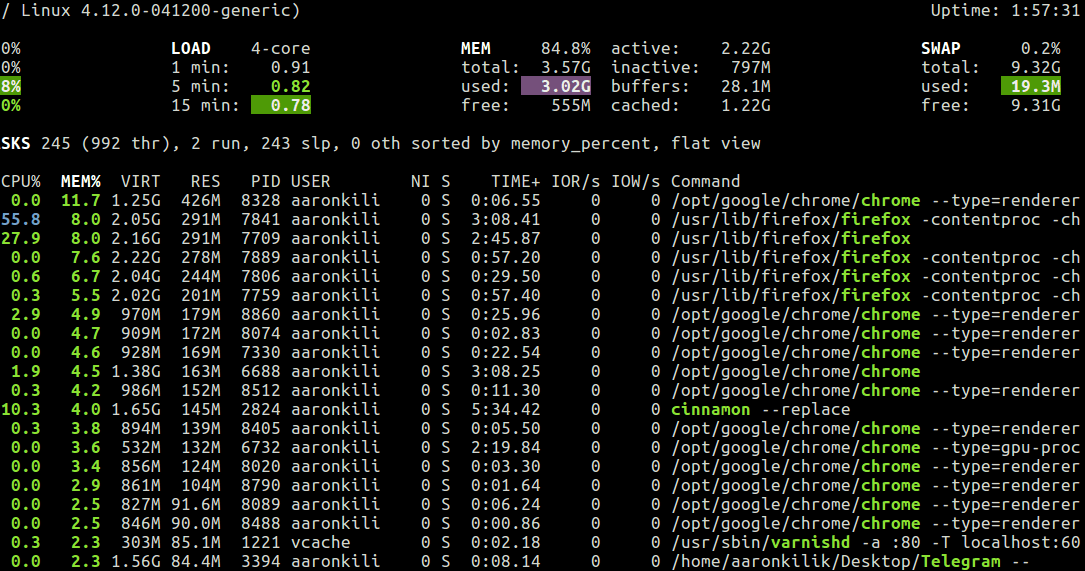
To better understand memory usage by the two browsers, we need to clearly interpret the output the meaning of the %MEM, VIRT and RES columns from the process list headers:
- VIRT – represents the total amount of memory a process is able to access at the moment, which includes RAM, Swap and any shared memory being accessed.
- RES – is the accurate representation of how much amount of resident memory or actual physical memory a process is consuming.
- %MEM – represents the percentage of physical (resident) memory used by this process.
From the explanation and values in the screenshots above, Chrome still eats more physical memory than Quantum.
All in all, I suppose Quantum’s speedy new engine, that ships in with many other performance improvements speaks for its high memory utilization. But is it worth? I would like to here from you, via the comment form below.


